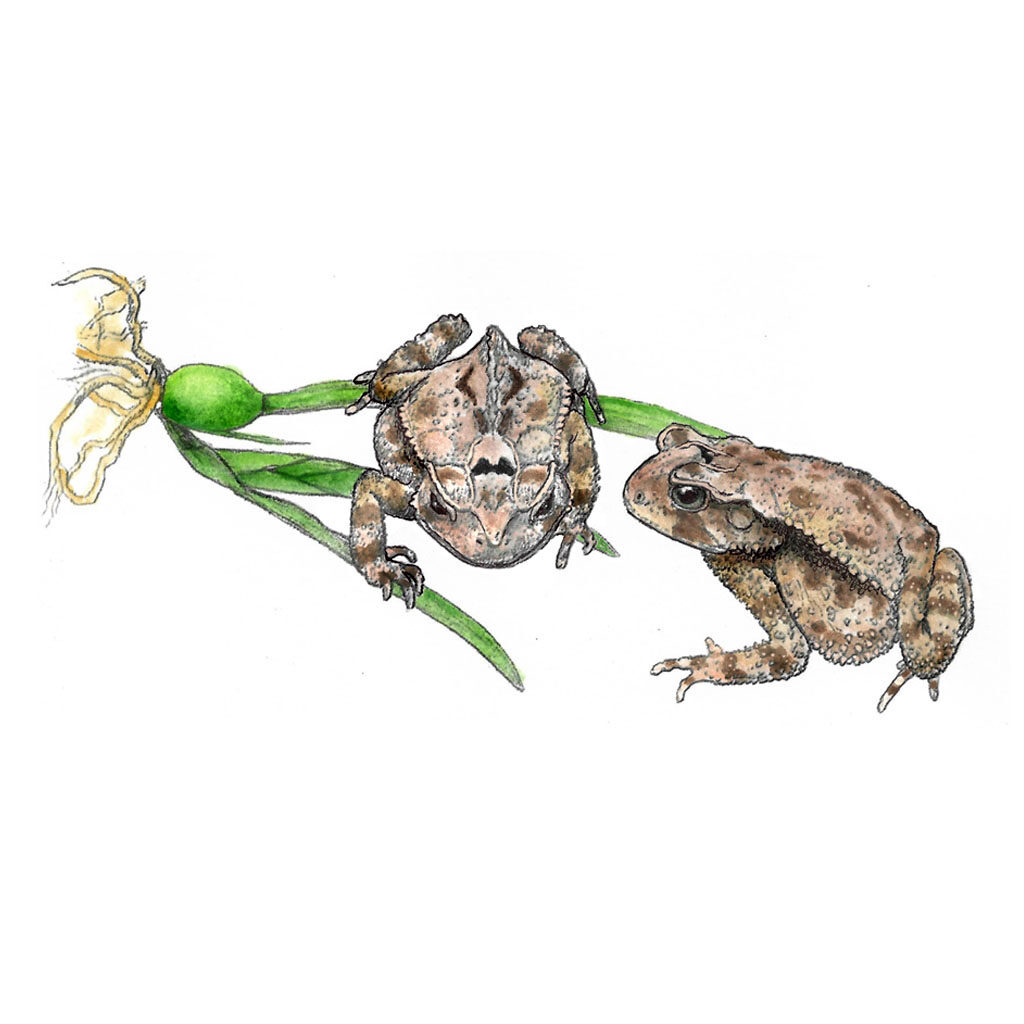Campbell’s Rainforest Toad

Isn’t camouflage awesome? I mistook my first Campbell’s Rainforest Toad for a leaf. I’d squatted beside a tiny pool by the side of the road near my house in Belize to see if there was anything interesting in the water – a snail, maybe? – and started to push aside a tatty, rotted-looking leaf, when it leaped with a heart-stopping plop into the water. I promptly screeched and toppled backward into the road. Well, hello there! Nice ta meetcha! Or as they say here in Belize, “Mucho gusto!”
The little toad that nearly gave me a heart attack was about 3” long, and tan with dark brown markings and a little black w between its eyes. A warty ridge led back from its eyebrows along its sides, with a black streak underlining it along its length. In fact, it looked a lot like the Gulf Coast Toad, Incilius nebulifer, in case you’ve met one of those very common toads somewhere along the Gulf Coast from Mexico to Mississippi.
The very similar Campbell’s Rainforest Toad was only first described in 1994, and its range is pretty small: the Maya Mountains of Belize (BIB is in the Maya Mountain foothills), and parts of Honduras, Mexico, and Guatemala. It is considered Near Threatened, due to habitat loss, so take care not to harm it in any way. There is almost no information about it online.
However, this little toad belongs to the Bufonidae family, and along with other True Toads, is it toothless, warty and has a pair of parotoid glands on its shoulders just behind its head – you can see the two oblong swellings in the painting above. Toad parotoid glands secrete an alkaloid poison when the toad is extremely stressed, and the poison can kill or sicken a dog if it is eaten – another good reason to not let your dogs roam in the rainforest.
Sometimes at night I hear a low, lovely trilling call, lasting 5-10 seconds, sometimes repeated four or five times at fifteen second intervals. This is probably Campbell’s Rainforest Toad, as the call is very similar to that of the Gulf Coast Toad, although the call of the Gulf Coast Toad is more staccato and metallic. You can hear a Gulf Coast Toad trilling here. Now, mentally slow it down just a little bit and mellow the sound, and you’ll have the song of what I think is Campbell’s Rainforest Toad, one of my favorite sounds in the Jungle Night Orchestra.